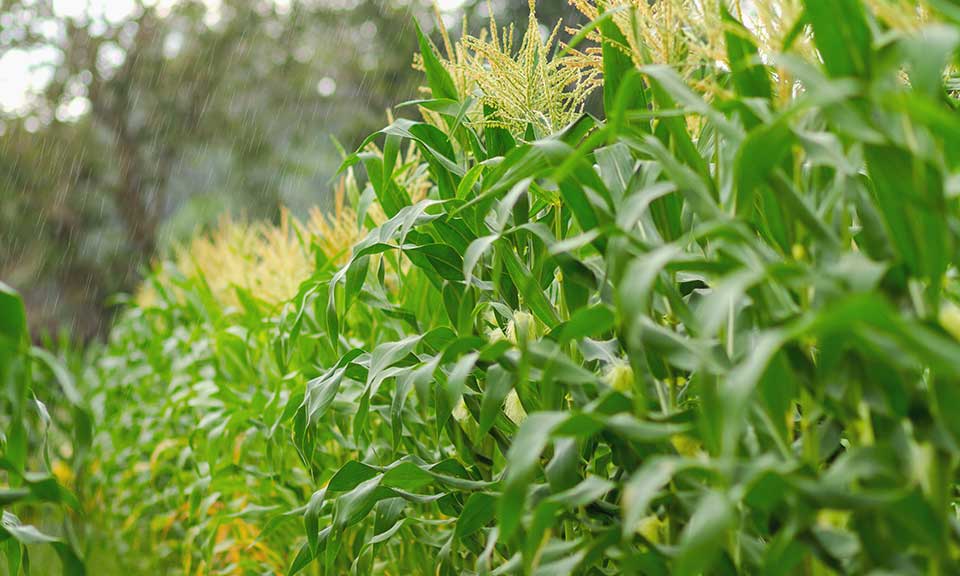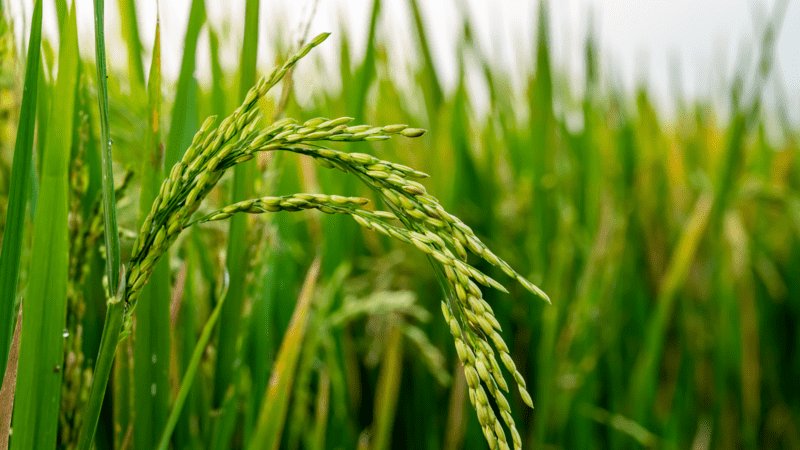Is there enough Brazilian corn to feed the world with China lurking?

The demand for Brazilian corn has never been greater as China prepares to enter the market and disrupt the global trade books for the feed grain, raising buyers' concerns on the impact it could have on prices and supplies.
Not too long ago, China's corn import demand was merely a rounding error on the global corn trade books as the nation fed its livestock industry with domestically farmed corn. China started its rebuild of a hog farming sector decimated by the African Swine Fever pandemic in an environment of an increasingly affluent population hungry for more animal protein. Suddenly, looking inwards for feed corn is no longer possible as the growth for corn demand has outpaced the increase in domestic corn production.
Related news: Risk of avian flu outbreak in Asia keeps feed corn demand outlook in check
China first looked to the US to provide for its growing corn appetite and subsequently to Ukraine to fill more demand growth, with the two countries being able to meet the Chinese government's stringent phytosanitary and GMO requirements.
This corn procurement strategy worked – until it did not.
When Russia invaded Ukraine Feb. 24, panic struck the global grain market owing to a supply-side obscurity after flows from a key corn exporter was put on an indefinite halt. It was the case until UN and Turkey brokered a deal for a safe passage for grains out of Ukrainian ports, but volumes were slow.
Related news: Black Sea Watch: Grain shipments ease further ahead of safe passage deadline
Prolonged war in Ukraine crossing over the harvest season of China's new crop from August essentially stripped China off more than 8 million mt of corn. Escalating political tensions between Beijing and Washington have also disincentivized Chinese state-owned buyers from extending supply exposure to increasingly pricier US corn supported by domestic ethanol program and fervent export demand.
"China cannot afford another trade war with US and this serves as a method to diversify their sources of corn instead of relying heavily on the US," a Singapore-based grains trader said.
As the war in Ukraine continue to drag on, there was a clear need to improve corn supply diversification for the world's second-largest economy with a 1.4 billion population. Speculations of China considering its stance on importing Brazilian corn got louder until China finally invoked an agreement first tabled eight years ago.
"There is no greater appetite for Brazilian corn from China than now," another trader said.
China announced in May that they have concluded key negotiations in a protocol with Brazil to allow imports of Brazilian corn but the timeline remained blurry even to those who trade daily. China waived quarantine requirements on Brazilian corn in July and accelerated phytosanitary approvals for export to commence in 2023, but relaxation of farm controls for corn buoyed confidence in Brazilian authorities to hopefully ship the first bulk cargo by the end of 2022.
Alas, a change in government in Brazil after a tightly contested election in October gave Chinese authorities the final push to see this deal. Shortly after Lula da Silva was elected to succeed the incumbent Jair Bolsonaro as president, China's General Administration of Customs released an updated list of traders, facilities and terminals approved to export corn to China.
The reality of exports to China happening has never been clearer until now, and the final door left to be unlocked is the approval on the GMO requirements. As it stands, there are unapproved GMO strains in the hybrid corn seeds used in farming in Brazil waiting to be given the green light by Chinese authorities before they could leave Brazilian shores.
The prospect of China vying for Brazilian corn is sufficient reason for existing destination markets prepare for a stiff competition going forward. Even as the Black Sea Grain Initiative received a 120-day extension Nov. 17, supply diversification will remain paramount in the Chinese policymakers' interests.
Would China seek to replace the supply void left by Ukraine or would they also replace more US corn with Brazilian supply? The jury is still out.
The data tells the story. Spain, Egypt, Iran, Japan and South Korea took up close to 60% of Brazil's corn exports in the 2021 calendar year, and more than 50% between January and September. In a demand-driven scenario, China's involvement in the trade flow will provide massive tailwinds to prices, which would be welcomed by Brazilian farmers. However, US corn could come into the picture to provide a ceiling to prices and participate in more flows to the biggest importers.
Brazil is expecting another record corn crop in 2022-23 and this should provide some comfort to key buyers regarding supply, at least for the time being—until we see another major scarcity event in the form of a record La Niña phenomenon in South America or a record Chinese corn crop production failure.
Right now, participants are sitting still, waiting for the trade cards to shuffle. Until the first corn vessel begins its voyage from Brazil to China, it is business as usual for buyers and sellers.

News
India's wheat stocks in state-run inventories depleted to a 16-year low as the central government sold record quantities to augment domestic supplies and rein in rising prices amid poor crop yields during two previous seasons. Wheat stocks in government warehouses were at 7.5 million mt at the start of April, down from 8.4 million mt a year ago, an official at the Food Corporation of India told S&P Global Commodity Insights. Over the past decade, wheat stocks on April 1 averaged 16.7 million mt. Despite the sharp fall in stocks, the government was able to meet the buffer and strategic reserve norms that mandate holding wheat stocks at or above 7.46 million mt April 1. The government has planned to aggressively acquire wheat to replenish its stocks at state-run warehouses. The government plans to procure around 33.5 million mt wheat produced in marketing year 2024-25 (April-March), nearly 28% higher than the actual procurement of 26.2 million mt a year prior. India could not reach its wheat procurement target in MY 2022-23 and MY 2023-24, as heat waves weighed on the crop size. However, the pace of procurement has slowed over the past week as recent showers in key wheat producing states have delayed harvest operations, traders said. The government has pegged India's wheat output in crop year 2023-24 (July-June) at 112 million mt, slightly higher than the 110.55 million mt harvested in the previous season. However, an S&P Global Commodity Insights survey of 13 analysts and traders found India's wheat harvest in MY 2023-24 is likely slightly lower year on year, at 107 million-108 million mt. Recently, it has ordered mandatory declaration of wheat stocks available with traders, private warehouses, retailers and processors on a government-managed portal effective April 1 and every Friday thereafter, in a bid to ensure availability and prevent hoarding. Record sales The country has delved into state reserves to sell wheat to bulk consumers, as millers to try to curb domestic prices that have been above the state-fixed minimum buying price since the last crop was harvested. India has also provided repeated extensions to the scheme of distribution of free food grains to over 810 million beneficiaries under the Pradhan Mantri Garib Kalyan Anna Yojana for five years effective Jan. 1, 2024, has dampened the prospects for wheat and non-basmati rice exports in 2024. The move is aimed at ensuring food security to the beneficiaries, according to a government statement. The scheme, which was set to end this December, has been extended amid ongoing state assembly polls and upcoming general elections next year. However, if the government misses its procurement target, it may have to look for cheap imports or reduce import duty on the grain to ensure adequate domestic supplies. Despite the tight supply, it has been resisting calls to reduce or remove the 40% import duty on wheat. The government is also likely to extend export restrictions on wheat until March 2025. India banned wheat exports in May 2022, after domestic supplies tightened amid a drop in output. In marketing year 2022-23 (April-March), India planned to export nearly 10 million mt of wheat but ended up shipping nearly 5 million mt. Geopolitical tensions Benchmark grain, oilseed and vegetable oil futures rose overnight in the US and during morning trade in Asia April 19, reversing a bearish streak, after Israel launched a retaliatory missile attack on Iran, fueling fears of an escalating conflict in the Middle East. Any potential supply bottlenecks may spur a rise in export prices of wheat from Black Sea origin, traders said. The most active July soft red winter wheat contract on the Chicago Board of Trade rose 2.6% from the previous close to $5.675/bushel at 0320 GMT. As of 1640 GMT, the contract was trading at $5.62/bushel, up 1.67% from the previous close. In the EU, the Euronext milling wheat contract for May was up 0.4% from the previous close at Eur206.50/mt ($219.88) as of 1640 GMT. Platts, part of S&P Global Commodity Insights, assessed EU 11.5% wheat FOB CVB at $213.25/mt April 18, up $1/mt on the day.

News
Bayer AG has announced the pilot of an expert generative AI (GenAI) system that “quickly and accurately” answers questions related to agronomy, farm management and Bayer agricultural products. The pilot has been developed in collaboration with Microsoft as leading technology partner and Ernst & Young (EY) as an industry partner, the company said. The system is the result of Bayer using proprietary agronomic data to train a large language model (LLM) with years of internal data, insights from thousands of trials within its vast testing network and centuries of aggregated experience from Bayer agronomists around the world, the company said. “Our unique GenAI system has the potential to serve agronomists and benefit farmers all over the world, further advancing AI as an indispensable technology for agriculture,” said Amanda McClerren, CIO and head of digital transformation & information technology for Bayer’s crop science division. Bayer said it is exploring ways to integrate the expert GenAI system into its digital offerings, and the company anticipates broad opportunities for collaboration with other agricultural offerings and partners. “Bayer aims to expand the pilot of the expert GenAI system to selected agronomists and potentially farmers as early as this year, while continuing to advance a separate GenAI prototype allowing users to directly query their own farm data,” the company said. In addition, the partnership between Bayer and Microsoft enables the company to bring ready-made capabilities, AgPowered Services, to the agri-food industry, such as Bayer’s Historical Weather that brings a comprehensive weather dataset to Azure Data Manager for Agriculture that spans the last 40 years and provides detailed, field-level weather insights across global agricultural regions, the company said. Integrating tools from IBM, including from the IBM Environmental Intelligence Suite, the new capability, which was previously available for internal use only, can inform weather risk assessments and actuary processes, Bayer said. It will also be used by Bayer and others to forecast crop seasonality and production changes year over year, as well as train agronomic models, it said. Meanwhile, Bayer is developing a connector that enables access to irrigation data from Lindsay Corp., an industry-leading irrigation solution provider. This expands the data types available to Azure Data Manager's enterprise customers, making it possible for them to connect to irrigation data in the same way as weather, imagery, original equipment manufacturer (OEM) and other data types, the company said. The new cloud offerings will also support regulatory and sustainability reporting, such as providing supply chain traceability that can help ensure compliance with new laws such as the EU Deforestation Regulation, which is expected to go into effect at the end of 2024, Bayer said. This article was first published in chemweek.com. Photo credit: Bayer

News
Asia has seen the fastest growth in biofuels production and exports globally, driven by government policies and export markets for feedstocks. To capitalize on the boom, governments have rapidly pushed out biofuel mandates focused around their country’s main agricultural products. Presently, the largest biofuel producers in the region are China, India, Indonesia, Malaysia, the Philippines and Thailand. Here’s a ready reckoner for Asia’s major biofuel policies along with production, trade and prices. Click for the full-size infographic